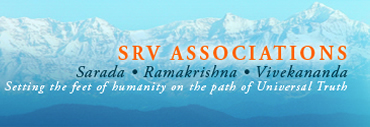Student Notebook
Article Index
Now the Agamas, Tantras, for Contrast
[It should be noted that there are Tantra scriptures for five different Ideals: Shakti (Divine Mother), Vishnu, Siva, Ganapati, and Surya (Sun God). Our retreat drew primarily on the Shakta and Shaivite perspectives.]
The Tantras are concerned with revelation and direct perception. Tantra does not speak so much in terms of ignorance, but focuses more on everything being a manifestation of Consciousness in the mode of the play of Siva and Shakti. The imperfections (malas) of living beings are "assumed" by each individual. When these malas (imperfections) ripen, they get filled with Siva and Shakti. In other words, imperfection, being in the nature of relativity and the mind, is taken on but looked upon as a veil which will simply evaporate over time, bringing one closer to Paramasiva naturally.
[Babaji presented the chart, "Sristhi Rahasya, Tantra's Secret of Creation," generally constructed from the Kashmiri Shaivism perspective in Tantra. In this chart, Niskala Siva, or Paramasiva, is Ultimate Reality, transcendent of everything. Chid-Jyoti is the ocean of Consciousness emanating from Paramasiva. Its first expression is Sakala Siva (Essence of Wisdom) and Mahashakti (Divine Will & Power) known as "the Two who are One." In brief, the primordial, inherent Love and Attraction of Sakala Siva and Mahashakti brings forth the subtle Bindu, wherein all the cosmic principles like time, space, cosmic laws, etc., are held in potential. This is the source of all triputis (time, space, causation; past, present, future; projection, preservation, dissolution). After the Bindu bursts in Love, the conditions are set for Shabda Brahman, the primal vibration from whence creation begins. From Shabda Brahman (Omkara) come the tanmatras (subtle elements) that bring forth the gross elements of ether, air, fire, water, and earth.]
Characteristics of the Agamas
1. Tantra views the individual as always one with Universal Reality. A subtle awakening process that ultimately unites the Supreme Soul and the individual Soul is guaranteed. It is only measured by how soon the practitioner wants to "eat." Holy Mother, Sri Sarada Devi, gave the analogy that everyone will eat but the most industrious will cook their meal early in the day, while others, less industrious, may have to wait until midnight. So those with intense yearning for freedom will attain this union sooner.
2. Tantra looks at the individual in terms of microcosm and the macrocosm, however, everything revolves around mankind. Human beings have physical, mental, and spiritual sides that must be developed.
3. Tantra prefers the Abhasavada [that the individual is a thought projection from the fourfold mind] view instead of the Avaccheda view of false superimposition. Tattvas (cosmic principles) are analyzed from the subjective and objective perspectives as well as from the individual and macrocosmic perspectives.
[Other points Babaji made while introducing Tantra:]
Paramasiva, Ultimate Reality, Immutable and All-pervasive, is characterized by the statement: "Consciousness Is." Siva's Shakti has six grades of Consciousness:
Chit - Existence
Ananda - Experience
Iccha - Will
Jnana - Knowledge
Kriya - Dynamism
Dravya - Production

